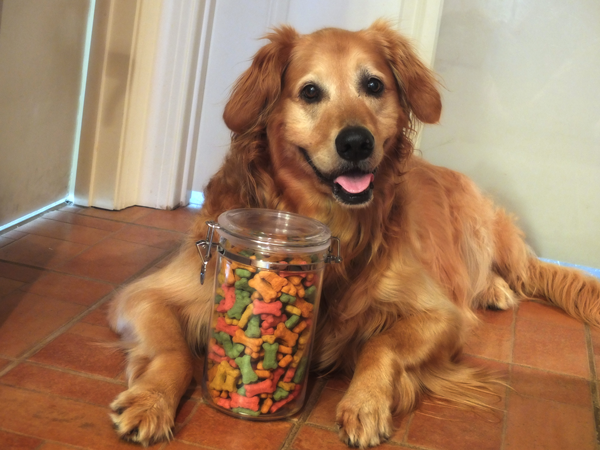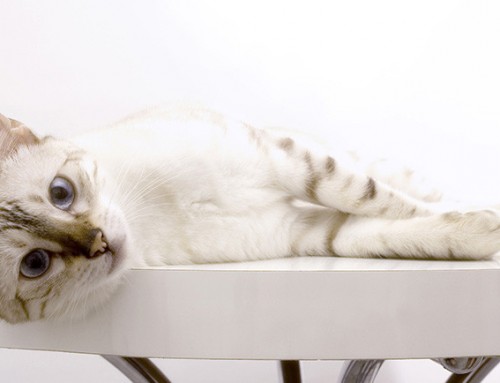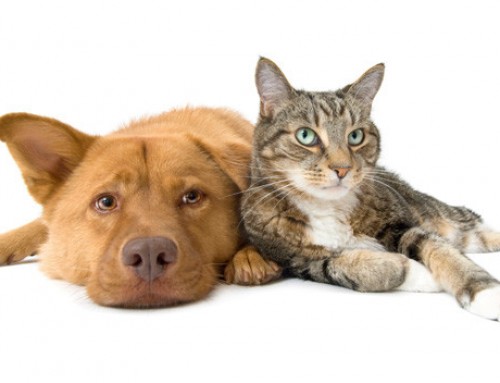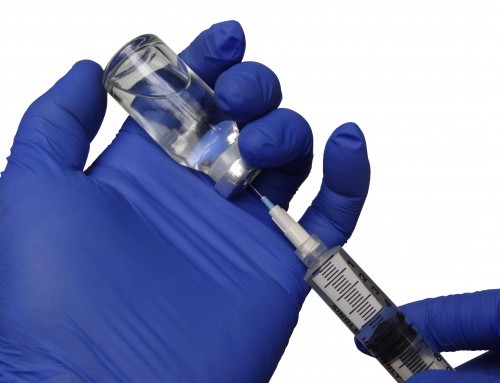Proper dietary nutrition is one of the keys to good health and longevity for our pets. In this article, you’ll learn about the nutritional requirements for both dogs and cats. Then, we’ll discuss how to provide your pet with a balanced diet, including how to choose the right type of food, if you should feed them homemade food, and what not to feed your pet.
Table of contents
The basics of nutrition
When choosing the right diet for your pet, nutrition is one of the most important factors for you to consider. Nutrition is the interaction between nutrients and the health of an animal. Nutrients include carbohydrates, fats, proteins, amino acids, vitamins, minerals, and water. Every animal requires a different balance of nutrients in their diet. This balance is based on their species, age, overall health, lifestyle, and other variables.
For example, the nutritional needs of a young kitten are different from those for an adult cat. Kittens and puppies should eat specially formulated food until about 10-12 months of age, because they require extra DHA and Vitamin E to build strong immune systems and develop healthy neural functions. In another example, the nutritional needs of an adult dog that leads an active lifestyle are different from those for an adult dog that only goes on a daily walk–more active dogs require a higher percentage of fat in their diet compared to less active dogs. Seniors pets, categorized as cats and dogs over the age of 7 years, also require specific formulations of nutrients in their food to promote the best health possible.
Fat and carbohydrates are the primary sources of energy for dogs and cats. Fat has an extra role besides energy, because it is necessary for absorption of Vitamins A, D, E, and K in your pet’s body. Protein is required for growth and development. It has a role in cellular maintanence and robustness of the immune system. Protein can also provide energy to your pet, but not as effectively as fat and carbohydrates–this is why “high protein” food doesn’t mean “high energy” food. See the table below to learn more about some of the important nutrients that your pets need to thrive.
Quick definitions
| Nutrient | What It Does | Other Details |
|---|---|---|
| Vitamin A | Supports healthy vision, skin, and immune system. | While dogs can digest a form of Vitamin A found in plants, cats cannot and so they must receive Vitamin A from animal liver. Puppies especially need Vitamin A to have healthy vision, muscles, and skin. |
| Vitamin D | Builds teeth and bones. | Unlike humans, dogs and cats cannot make sufficient quantities of Vitamin D in their skin. Kittens and puppies need Vitamin D supplementation in their diet to avoid rickets and other complications. Adult pets need supplementation too, but less than younger pets. |
| Vitamin E | Keeps the immune system strong. | Kittens and puppies especially need Vitamin E to develop a strong immune system. It’s also a potent antioxidant. |
| Vitamin C | Keeps the immune system strong. | Cats and dogs can meet their own Vitamin C needs by metabolizing glucose or natural production of Vitamin C by the liver. However, Vitamin C supplements might still have antioxidant benefits for pets. |
| Calcium | Supports strong teeth and bones. Involved in muscle function and blood clotting. | Large breed puppies should have less calcium to prevent bone abnormalities. Adult and senior animals should also have less calcium in their diet. |
| Phosphorus | Supports strong teeth and bones. Involved in muscle function. | Adult and senior pets need less to preserve kidney health. |
| Sodium | Maintains correct hydration levels and required for cell functioning. | Adult and senior pets need less to preserve heart and kidney health. |
| Protein | Builds strong cells. | Puppies and kittens need more protein in their diet than adult and senior animals. |
| Carbohydrates | Provides energy to cells quickly. | Dogs and cats from all lifestages can utilize carbohydrates as an energy source. Cats should eat less carbohydrates than dogs, however, because they are carnivores. |
| Fats | Provides energy that can be stored for cells later when they need it. | Young animals need more fat than adult animals overall, but large breed puppies specifically should not have an excess of fat in their diet to prevent bone abnormalities. |
| Omega 3, Omega 6 | Supports healthy skin and coat. | Senior pets with inflammatory diseases such as arthritis might benefit from Omega 3 fatty acids. |
| DHA | Necessary for neural functioning. | Kittens and puppies need DHA to build proper neural functioning. |
| Fiber | Promotes digestive health. | Senior animals need more fiber in their diets. |
| Taurine | An essential amino acid, necessary for cats to live. | All cats require taurine and seniors require a food with added taurine. |
Another factor to consider in choosing the right diet for your pet is the ingredients that go into a pet food. Ingredients should be chosen based on their nutritional content and their digestibility–which is how much of that nutritional content is actually absorbed by the animal’s body. For example, the graph below shows the percentage of starch in various grain flours that is digestible by dogs.
Digestibility of various flours in dry dog foods
Nutrition for cats
Cats are carnivores and require a high amount of protein in their diet. In fact, kittens need about 50% more protein in their diet than puppies, and adult cats need 200% more protein in their diet than adult dogs.
Cats require a three essential amino acids: taurine, arginine, and methionine. Taurine is required to have a healthy heart, good vision, and functioning reproductive systems. Arginine is required for a cat’s liver to function properly and filter out harmful byproducts from their body. In fact, eating a single meal deficient in arginine can make a cat ill from ammonia toxicity. Methionine plays a role in many different proteins in a cat’s body and deficiencies can affect a cat’s coat, skin, eyes, and heart health. All of these amino acid are only found in meat, so all cats need meat-based diets to maintain their health.
That being said, cats do have enzymes in their digestive tract that can digest carbohydrates, so the starches found in many cat foods can be digested for energy. For growing and active animals, this can be an effective source of energy. But these starches should only make up a small portion of the cat’s food, about 35% max.
For a cat, vegetarian diets are absolutely out of the question. Not even nutritional supplements can allow a cat to eat vegetarian or vegan, because some of their essential nutrients are only obtainable from animal products. For example, sources of Vitamin A can come from plants, as carotene, or from animal livers, as retinyl palmitate. Cats lack the enzymes to convert carotene to Vitamin A–they can only convert retinyl palmitate from animal livers to Vitamin A. So, they necessarily need to consume animal products to survive.
Finally, we’ll discuss the most important nutrient for cats: water. Keeping your cat well-hydrated is vital in preventing diseases associated with the urinary tract. Wild cats receive most of their hydration from the prey they eat, so sometimes it can be a little tricky to keep your house cat hydrated. Here are a few tips:
- Cats with sensitive whiskers might prefer to drink from a wide, shallow bowl.
- Some cats prefer a source of running water, so investing in a cat fountain might encourage your cat to drink more water.
- Change your cat’s water supply frequently, wiping away any residue on the bowl.
- Aim to keep your cat’s bowl as clean as your own glassware, even occasionally running it through the dishwasher.
- Some cats will not drink water that is placed next to their food source or litter box, so try moving their water bowl to another area.
- Milk is not a replacement for water, and can actually give your cat serious digestive issues.
- Wet food can help supplement your cat’s hydration, but only giving your cat wet food can lead to dental health issues.
Nutrition for dogs
Dogs are omnivores, which may come as a surprise to some dog owners. Although wolves are primarily carnivores, during the process of domestication, dogs gained the ability to effectively digest starches. In fact, dogs have about four to thirty copies of a gene that produces an enzyme for digesting starches in their bodies. In contrast, wolves only have two copies.
This provides evidence that a raw meat diet is not the best choice for our canine companions, because their bodies have adapted to digesting starches and using them for energy. In fact, a raw meat diet can have harmful effects, because it contains too much protein, not enough carbohydrates, and can be difficult on a dog’s kidneys. It’s interesting to note that even wolves will graze on grasses and eat the stomach contents of herbivorous prey to supplement their primarily meat-based diet with carbohydrates.
Think of it this way: if a raw meat diet isn’t nutritionally complete enough for a wolf, it will definitely pose problems for a dog, whose species has over many generations adapted to eat grains and vegetables while coexisting with human society.
On the other hand, dogs do require some proteins that are only available in animal products, so switching your dog to a vegetarian diet can pose issues as well. Although it is possible for dogs to survive on both of these specialized diets with the right supplementation and guidance from a veterinary nutritionist, a dog will only thrive when it eats as an omnivore, because its body is adapted to an omnivorous diet.
Let’s not forget the most important nutrient for dogs: water! Make sure that your dog always has access to clean, fresh water, especially after work or exercise. Change the water in your dog’s bowl at least once a day and be sure to wipe away any build-up on the inside of the bowl when you do this. Aim to keep your dog’s water bowl as clean as your other glassware to keep your dog healthy and happy.
Picking the right food for your pet
When choosing what type of pet food to buy your pet, there are a few questions to consider:
- “What is the current life stage of my pet?” Depending on whether your pet is growing, an adult, a senior, or pregnant, they will require different formulations of food.
- “Does my pet have any health factors that I need to consider?” If your pet has a health condition, such as diabetes or high blood pressure, or is overweight, they may require a special formulation of food. Consult your veterinarian to find the right type of food for your pet’s medical status.
- “Should I feed my pet wet food or dry food?” While dry food is better for dental health, wet food has added hydration, which can benefit pets that are predisposed to kidney problems, like senior cats, or pets who are diabetic. Most pets will be fine eating either food.
And finally, how can we be sure that a manufacturer’s pet food is high quality? One of the best ways is by making sure they have an AAFCO (Association of American Feed Control Officials) Nutritional Adequacy Statement on the packaging. If a pet food does not have an AAFCO statement on its packaging, there is no way to ensure that its claims of being “complete and balanced” are true.
There are two different ways that AAFCO verifies that food is nutritionally complete and balanced.
Formulation method
AAFCO has a set of nutritional profiles for dogs and cats in every age group that include what quantities of nutrients should be present in a particular type of pet food. Pet food manufacturers can use these profiles as guidelines to formulate their pet food and then use a laboratory analysis to substantiate their nutritional content. This method is less expensive for pet food manufacturers and can be done more quickly than the feeding trial method. However, because this method means the food has not been tested on animals, there is no guarantee that the food will effectively supply nutrients to the pet, due to factors like digestibility.
An AAFCO statement that guarantees nutritional completeness using the formulation method would look like this:
“ABC Brand Cat Food is formulated to meet the nutritional levels established by the AAFCO Cat Food Nutrient Profiles for Maintenance.”
Feeding trial method
Pet food formulated using this method also follows AAFCO nutritional profiles and undergoes laboratory analysis. Additionally, the pet food will undergo a feeding trial, which means that the food will be given to a group of pets for a minimum of twenty six weeks in order to ensure that they can use it as a sole source of nutrition, per AAFCO feeding trial protocols. This method is more expensive and takes more time to complete, but it ensures that pets can use the food as their only source of nutrition. The feeding trial method is preferred, because it guarantees palatability and digestibility.
An AAFCO statement that guarantees nutritional completeness using the feeding trial method would look like this:
“Animal feeding trials using AAFCO procedures substantiate that XYZ Brand Dog Food provides complete and balanced nutrition for adult dogs.”
AAFCO naming guidelines
| Pet food name | Example | Percentage of ingredient in food |
|---|---|---|
| Ingredient name without any qualifiers | Beef, chicken, seafood, turkey, lamb, etc. | 95% |
| Dinner, meal, plate, entree, feast, etc. of ingredient name | Beef dinner, turkey meal, seafood plate, chicken feast, etc. | 25% |
| With ingredient name | With chicken, with beef, with fish, etc. | 3% |
| Flavor of ingredient name | Bacon flavor, flavor of chicken, beef flavor, etc. | Does not need to contain any percentage of ingredient, but the source of the flavor must be listed in the ingredients list. |
What not to feed your pets
Do not feed your cats…
- Alcohol
- Apple seeds
- Apricot pits
- Artificial sweetener (xylitol)
- Baby food
- Bones
- Chocolate
- Coffee, tea, and anything containing caffeine
- Fat trimmings
- Grapes, raisins, and currants
- Green potatoes
- Green tomatoes
- Human vitamins
- Large quantities of salt
- Large quantities of sugar
- Macadamia nuts
- Milk and dairy products
- Spoiled food
- Mushrooms
- Onions, onion powder, chives, and garlic
- Persimmons
- Raw egg whites
- Raw meat
- Rhubarb leaves
- Star fruit
- Tobacco
- Tuna (as their only food source)
- Tylenol (acetaminophen)
- Yeast dough
Feeding your cat these substances will cause illness and, in some cases, death.
Do not feed your dogs…
- Alcohol
- Apricot pits
- Artificial sweetener (xylitol)
- Avocado
- Bones
- Coffee, tea, or anything containing caffeine
- Chocolate
- Fat trimmings
- Fish (to excess, occasional fish is fine)
- Grapes, raisins, currants
- Green potatoes
- Green tomatoes
- Hops
- Human vitamins
- Large quantities of salt
- Large quantities of sugar
- Macadamia nuts
- Milk and dairy
- Mushrooms
- Onions, chives, and garlic
- Persimmons
- Raw eggs
- Raw meat
- Rhubarb leaves
- Spoiled food
- Star fruit
- Tobacco
- Tylenol (acetaminophen)
- Yeast dough
Feeding your dog these substances will cause illness and, in some cases, death.
Frequently asked questions about pet diets
Are grains just filler in pet food?
Fillers are ingredients that provide no nutrients and may be used as a source of dietary fiber, which is required for digestive health. For example, cellulose does not provide nutrients to cats, dogs, or humans, and may be used as filler in certain foods to add to the dietary fiber content. Grains provide carbohydrates, proteins, vitamins, and minerals in pet food, so they are not considered filler. Let’s take corn as an example. It provides 10% of all required proteins and contains beta-carotene (precursor to Vitamin A), Vitamin E, lutein, fatty acids such as linoleic acid, and carbohydrates. Of course, your pet cannot survive on only grains, but that doesn’t mean it’s filler.
Should I feed my pet treats?
Think of treats as the animal equivalent of a slice of cake. You can definitely give your pet treats, but you should give them to your pet with moderation. Treats should represent less than 5% of a cat’s or dog’s diet.
Is home-cooking better for my pets?
In a study done by Stockman, Fascetti, Kass, and Larsen (2013), 95% of homemade pet food recipes were found to be nutritionally incomplete for pets. This underlines the difficulty of making a nutritionally complete meal for your pets from scratch. While it is certainly possible (5% recipes examined in the study were nutritionally complete, after all), for the average pet owner, it is time-consuming and expensive, with no way of testing the nutritional quality of the food besides sending it off to a laboratory. We would recommend buying AAFCO approved pet food to guarantee nutritional completeness and balance for your pet’s diet. For pet owners who are still interested in home-cooking for their pet, it is recommended that you consult a veterinarian who can guide you through nutritional planning for your pet.
What are meat by-products and are they bad for my pet?
According to regulatory guidelines, by-products include parts of an animal such as the heart, lungs, liver, neck, kidneys, stomach, gizzard, brain, feet, back, and other tissues. They specifically exclude feathers, hair, hide, hooves, manure, and stomach contents. These by-products are all safe to consume and nutritionally indistinguishable from regular meats. In fact, some of these parts, known as giblets, are used in human foods like hot dogs and bologna.
There is also something called “by-product meal” in pet foods. By-product meal is produced when by-products are rendered. In the rendering process:
- By-products are cooked in what is basically a stew
- The water is cooked away
- The remaining fat is skimmed
- The residue is baked into “by-product meal”
This is a protein-rich powder that is added back into pet food.
There are legal guidelines for what by-product meal can contain depending on how it’s labeled. If by-product meal is labeled as “beef by-product meal,” “poultry by-product meal,” “chicken by-product meal,” or “turkey by-product meal,” it legally cannot contain any other type of tissue than what is advertised.
However, “animal by-product meal” and “meat by-product meal” can contain by-products from any animal, even roadkill or dead-on-arrival animals. This is where questions about the quality and safety of by-products have come from. Rest assured, major pet food companies do not use this type of by-product meal and they stay in contact with suppliers to assure the consistent quality of their ingredients.
Can the additives in pet foods harm my pets?
Most pet foods contain additives such as food coloring and preservatives. The most common additives used have been tested by the FDA and approved as safe to use in both animal and human foods. For example, some common preservatives used in dry pet foods include antioxidants such as Vitamin E or BHT. These are also used in foods for human consumption. Other additives include vitamins and minerals that are meant to ensure a nutritionally balanced diet. Sometimes, these safe, nutritional additives can have confusing names–for example, pyridoxine hydrochloride, l-ascorbic acid, calcifediol, and 5-methyltetrahydrofolate are actually the chemical names for Vitamin B6, Vitamin C, Vitamin D, and Vitamin B9, respectively.
What does the pet food ingredient called “animal digest” contain?
Digest (such as poultry digest) is an ingredient that is produced by incubating animal tissues with digestive enzymes that break down the tissue. This is similar to what occurs in the stomach and small intestine, except that the meat or tissue is not totally digested by the process. This creates a mixture of peptides, proteins, and amino acids that is highly digestible and tastes very good to dogs and cats. Tastiness, or palatability, is quite important in the formulation of pet food–after all, even if a food is perfectly nutritionally balanced, that doesn’t mean anything if your pet doesn’t want to eat it!
Is it true that some cheap pet food contains euthanized cats and dogs?
Major pet food companies are supplied with animal products from USDA-inspected plants and rendering facilities. While euthanized dogs and cats are sometimes disposed at rendering plants to produce livestock and poultry feed or non-edible products like fertilizer and soap, these are not USDA-inspected plants, so they have no connection to your pet food. Due to public concern, the USDA has looked for dog and cat tissue in randomly selected pet foods using DNA tests–all tests were negative.
Do carbohydrates cause diabetes in cats?
There is no evidence to support this. Studies have been done that show carbohydrates have a negligible effect on blood sugar level. Obesity and old age are the biggest risk factors for diabetes in cats.
I heard that grains can cause food allergies in dogs and cats. Is this true? Should I buy gluten-free?
Grain allergies make up only 1% of skin diseases and 10-15% of all allergic skin diseases. The most common culprits of food allergies in dogs are beef, chicken, milk, eggs, corn, wheat, and soy. An allergy to one type of grain doesn’t necessarily mean your pet will be allergic to all grains, because different grains contain different types of proteins, which is what triggers the allergic reaction. Allergies to wheat gluten have been found in some Irish Setters, but they are extremely rare in other breeds. So, for most dogs, buying gluten-free food probably won’t prevent any food allergies or improve your dog’s quality of life–it’s pure marketing. In fact, wheat gluten contains 75% of necessary proteins, so it can be an important source of protein in your pet’s diet.







Leave A Comment
You must be logged in to post a comment.